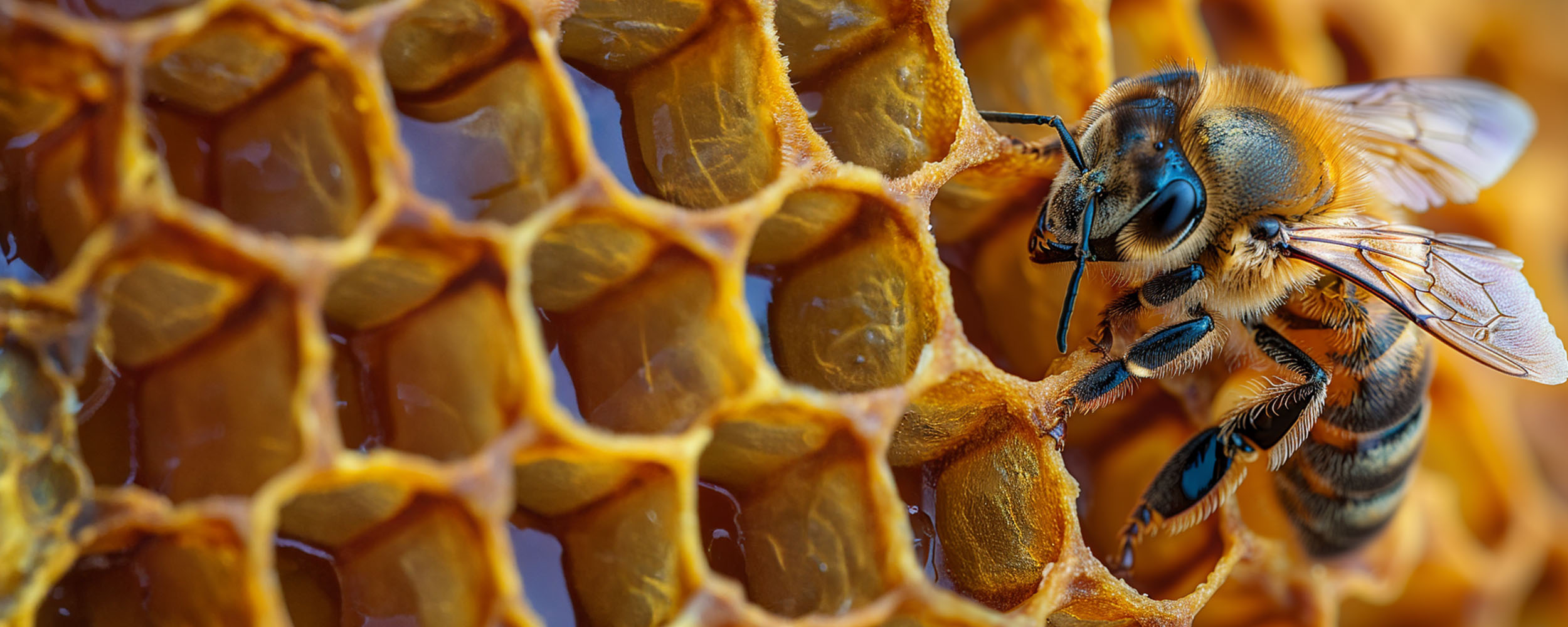
In 2023, the United States lost 48% of its agriculturally managed honey bee colonies in an unprecedented year. But the issue is more complex than the statistics can communicate.
In a Cornell Keynote from eCornell, Marina Caillaud, a lecturer of entomology in the College of Agriculture and Life Sciences (CALS), explains honey bee decline — which is tracked in data from the United States Department of Agriculture — and shares how experts and individuals can help with honey bee conservation. Caillaud and the Cornell Dyce Lab for Honey Bee Studies, housed in CALS, offer three ways we can protect and maintain bee populations.
1. Plan for your environment.
For beekeepers, the health of the hive is key, and the environment is a major factor. Many of the health challenges bees face come from the environment: pesticides, stress, droughts or poor nutrition. Before starting your own beehive, you must understand your own local weather conditions as well as the risks that come with them. If you live in drier conditions, be sure to prioritize water sources for your bees.
Further, the location of your beehive is essential to its success, so be sure to pick a location with plenty of sunlight and protection from the wind. Ensure that nectar or pollen is within 500 feet of the hive. Even though honey bees can travel three miles to forage for food, closer sources optimize energy conservation and honey production.
2. Understand the complex global status of honey bees
While honeybees are at the center of pollination for ecosystems and agriculture, the bee population is not a monolith. There are over 4,000 species of bees in the U.S., all of which have different needs. Sometimes, honey bee cultivation can put other pollinators at risk, especially when the hives increase competition for resources, increase the spread of diseases, and alter the natural habitat. As a result, it is important to ensure that your honey bee cultivation does not harm these other important subsections of our ecosystem. Provide adequate food and water, ensure your tools are clean so they don’t infect your hives or others and maintain the integrity of the natural landscape around your hive.
3. Collaborate with your community.
Even if you are not planning to keep honey bees, it is still important to keep your space friendly for visiting bees. To counteract the threats of habitat loss and pesticides, individuals can make improvements to their lawns.
The easiest step is to remove pesticides. While helpful to combat weeds, these chemicals are toxic to bees and can run off into neighboring waterways. The next step is to include plants that support pollination for most of the year. Bees love bright-colored flowers — especially purple, blue, white and violet — so you can do this while still maintaining a beautiful garden. To start, research native species in your area that specialize in pollen production. Then diversify your selections. Choose a few that are perennial and annual, so bees can continuously trust your area for pollination.
Seize opportunities to learn new beekeeping skills.
Faculty from Cornell University have designed online beekeeping certificate programs to guide you through your beekeeping practice. A five-week course from the Cornell College of Agriculture and Life Sciences is also available online through eCornell.